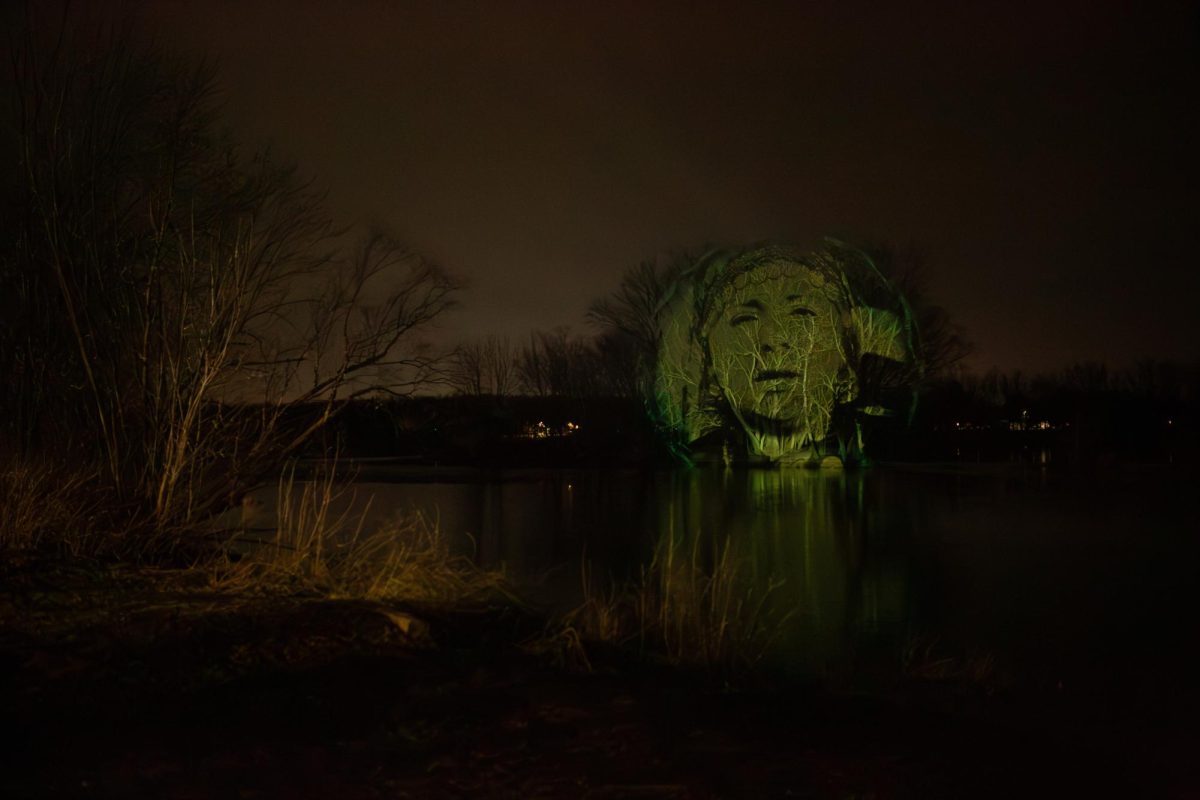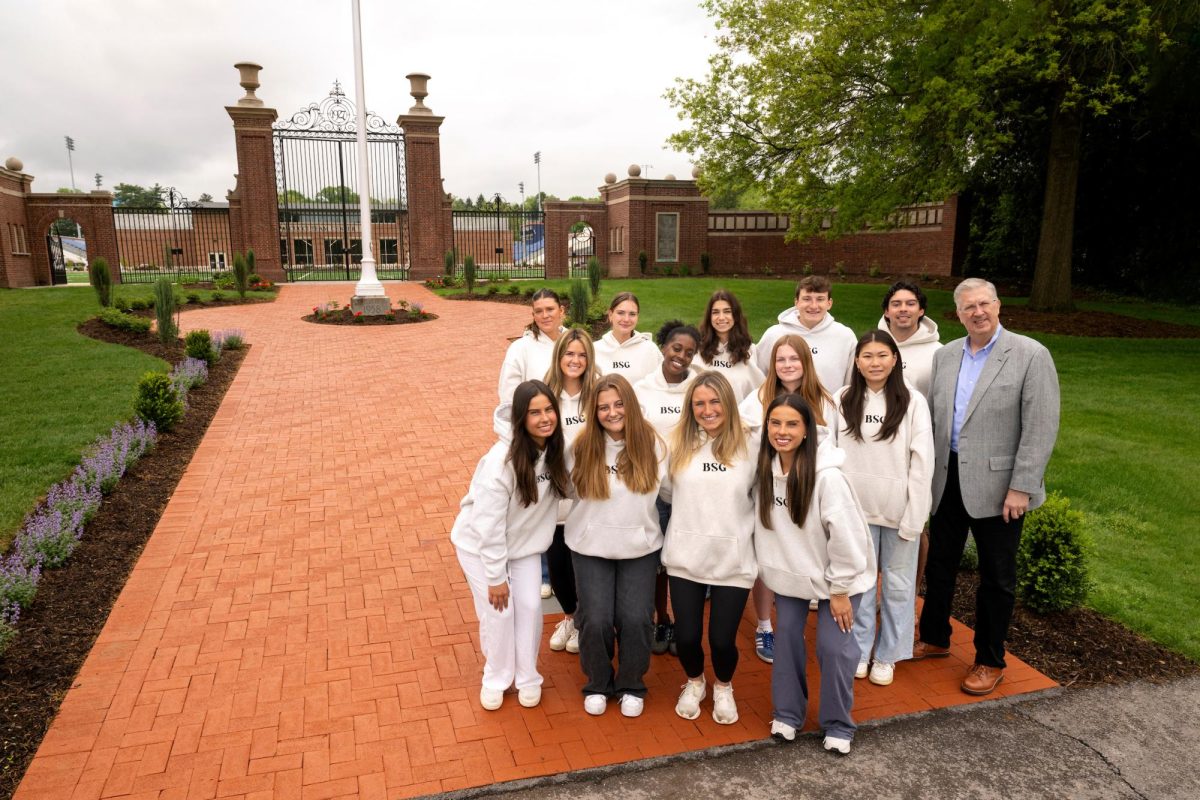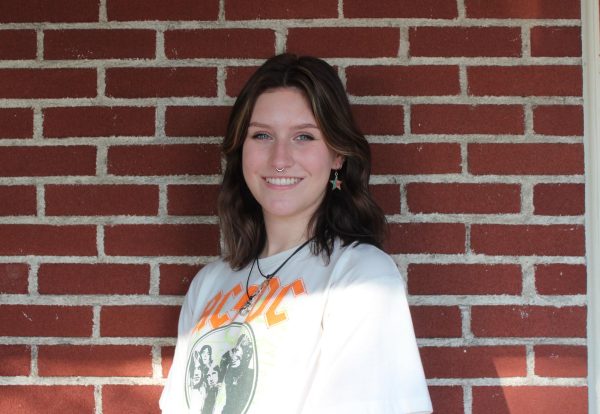This semester, our campus is fortunate to have Voluspa Jarpa, a renowned Chilean artist, as our Ekard Artist-in-Residence. I’m lucky to have been exposed to her work, likely more than other students have, through my enrollment in Printmaking, in which Professor Eddy Lopez often works alongside Jarpa to help translate her Spanish to English.
We had the opportunity to see some of Jarpa’s printing works in progress, to which I am very thankful, as sharing unfinished artwork requires an amount of vulnerability. Jarpa held an artist’s talk on March 7th, where she shared her existing work outside of her time here at Bucknell, and I was struck by her artistic approaches to the ideas of cultural trauma and information censorship.
Voluspa Jarpa’s most recent works and current work-in-progress are centered around the history of human zoos, a form of colonialist exhibition on natives and other people of color that shockingly persisted until 1958. In efforts to preserve these stories that are being lost to the archives, Jarpa is working to bring to light the harsh reality of human zoos, as well as bring life back to those subjected to this cruel treatment. Through AI face animation, Jarpa has utilized archival photos of those once exhibited and brought them to life through realistic facial movements.
This past Monday and Tuesday, March 25 and 26, Jarpa brought her unique artwork not only to campus, but to the Susquehanna River as well.
When sharing her work with my printmaking class, Jarpa explained that, upon first visiting the Susquehanna River, she could feel a particular energy coming from it. Through extensive research, she began to learn more about the Susquehannock tribes to which the river owes its name, who have been entirely wiped out, thus inspiring the art piece’s name: EXTINCTION.
I was able to attend Monday’s performance on the Science Quad, in which video was projected onto the side of Bertrand Library. Using video mapping technology, the contents of the video seemed to react to the building itself, with small waterfalls cascading between the windows without “drowning them out.” Text scrolled along the bricks dividing the two stories of windows, providing historical context on the Susquehannock peoples and their extinction. Jarpa furthered her initiative of bringing those lost back to life and utilized AI face animation once again to bring life to historic images of Susquahannock people.
The extinction of my people is likely a tragedy I will never fully understand, but it is nonetheless a heartbreaking reality that I can sympathize with. As someone that grew up in Pennsylvania, I’ve constantly been surrounded by locations sharing Native American names, undoubtedly now accompanied by a white-washed pronunciation.
I know that Bucknell has made efforts to acknowledge the campus’s use of stolen land through “land acknowledgements,” but it’s never quite felt like enough and sometimes feels out of place in certain contexts. The reality is that we can’t undo a centuries-old tragedy, and we certainly can’t bring the Susquehannock people back to life, but Jarpa may have brought us as close to this as we can get. I think that the beauty and modernity of the EXTINCTION video performance is something that this land needed, and I am grateful that I had the opportunity to witness it.
Artist Credits:
Extinction:
By Voluspa Jarpa
Special participation: Millaray Melinao, Mapuche people Machi
Artistic Assistant: Anissa Cavazos
Visual creative concept: Luis Barrera
Assistant: Micaela Barrera
Producer: Germán Rocca
Interview and vídeo editing: Violeta Molineux
Special Thanks: Ekard Artist in residence, Department of Art and Art History, Melissa Kilgus, Eddy López, Fernando Blanco






















